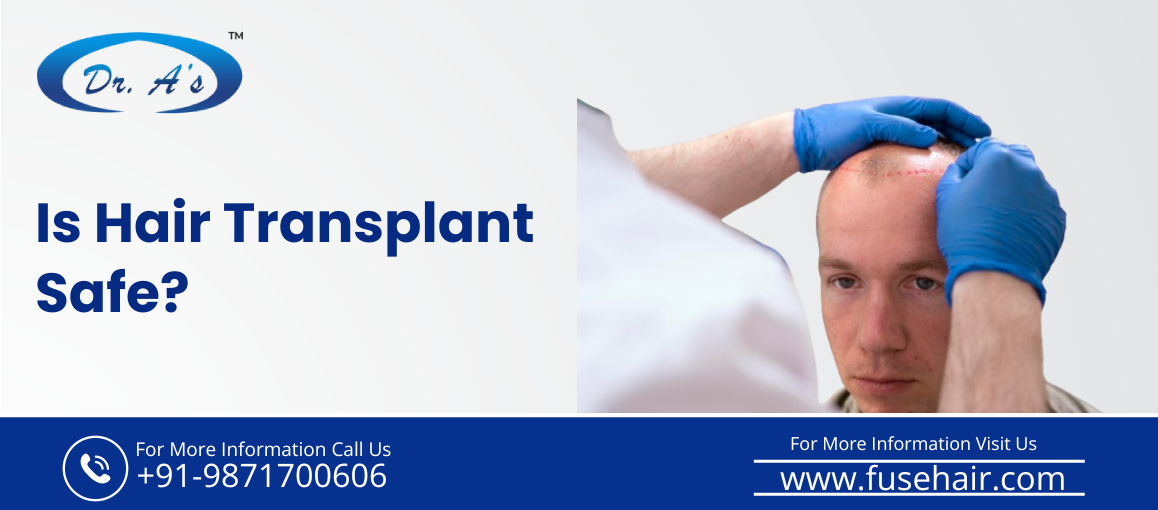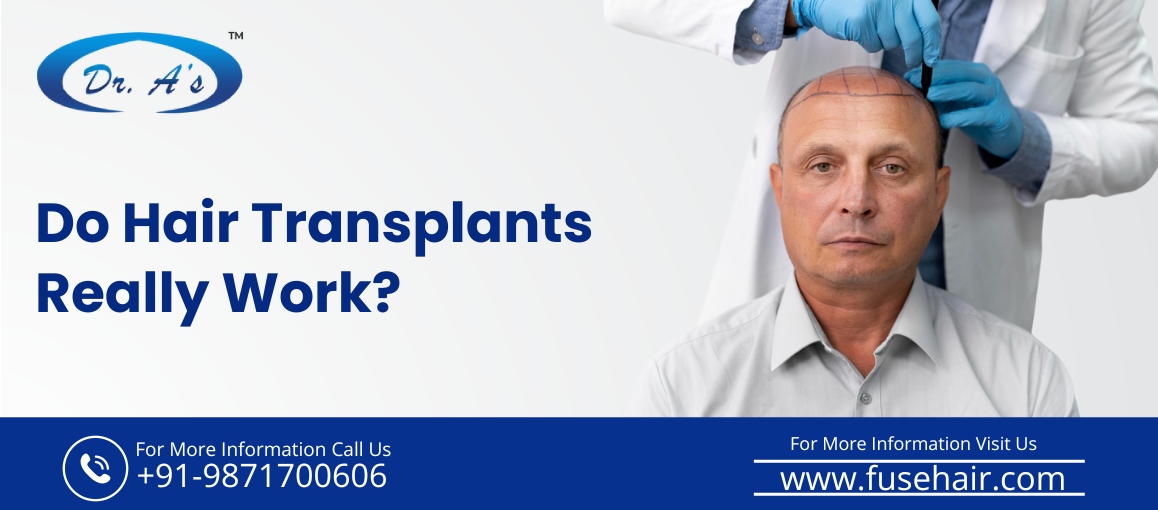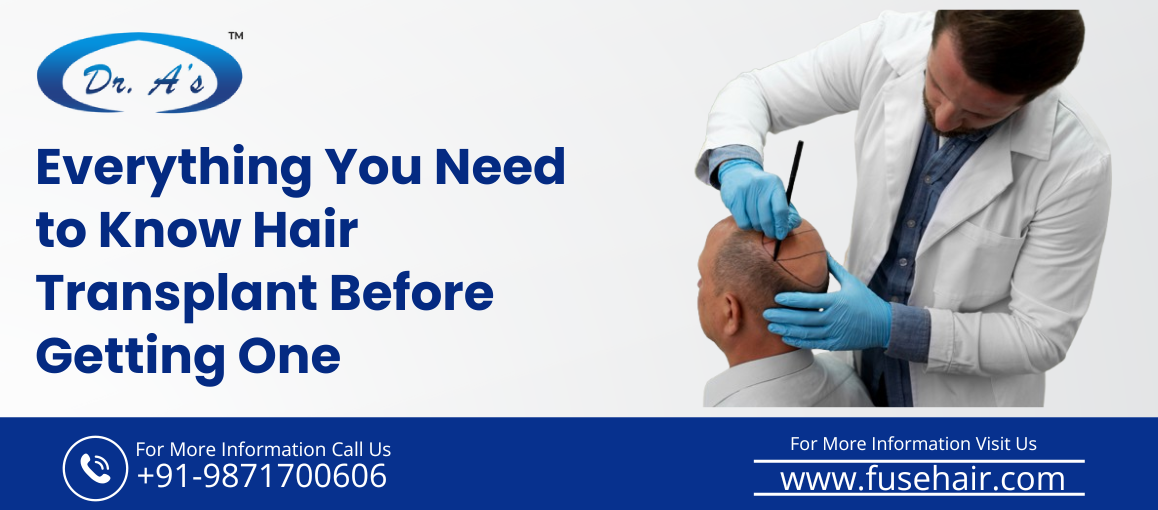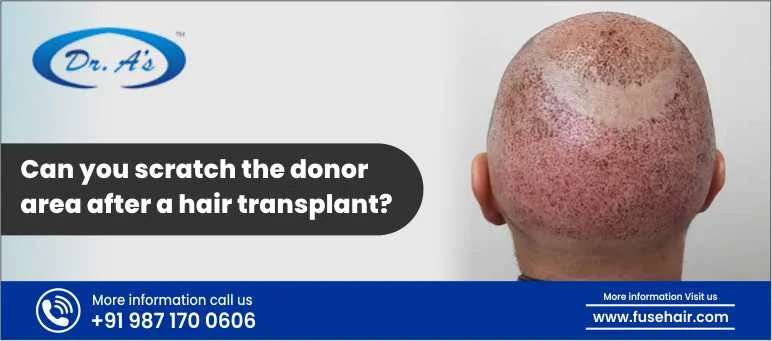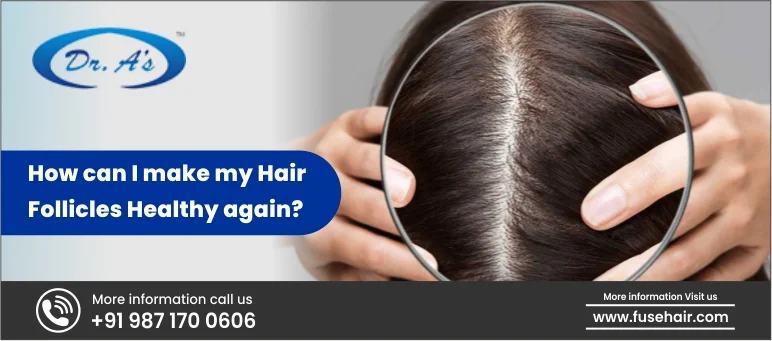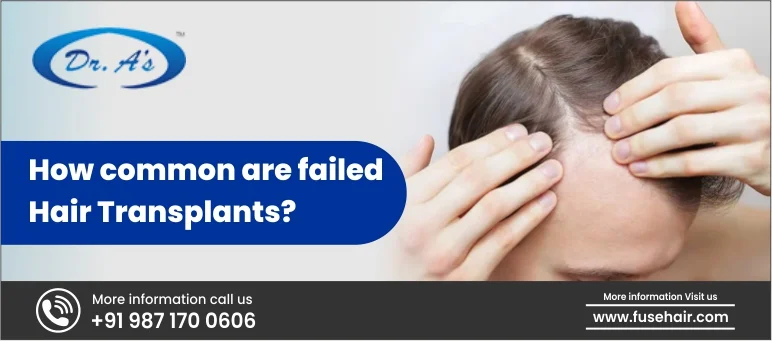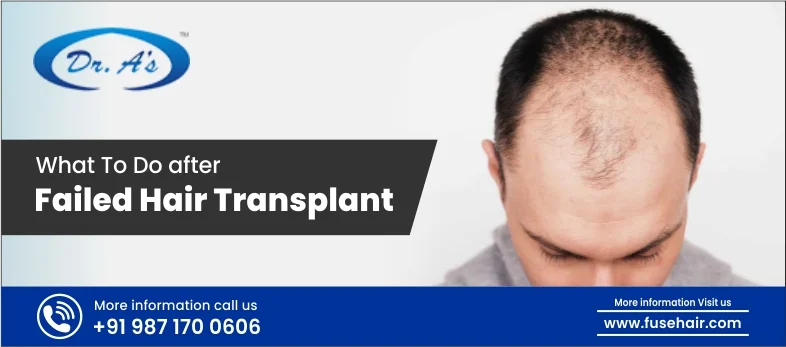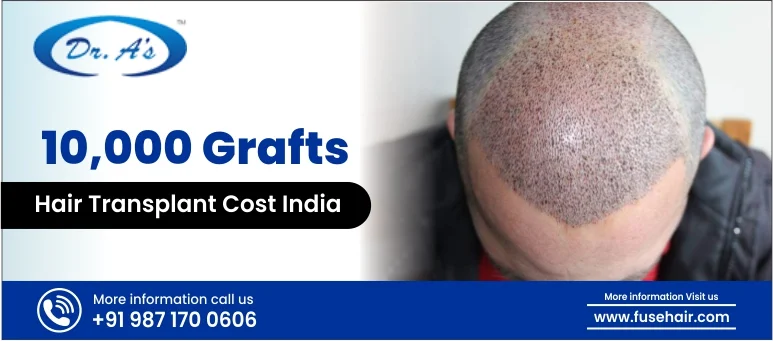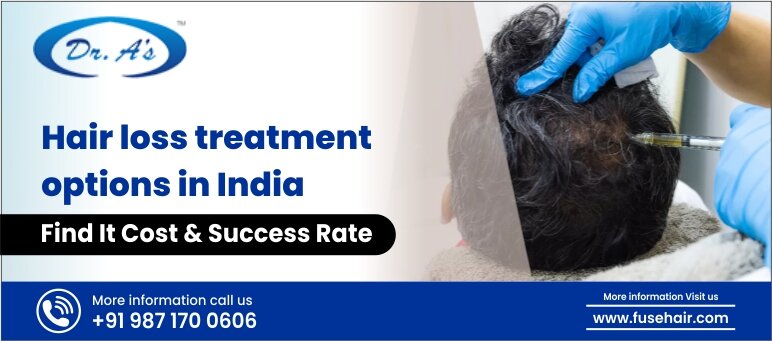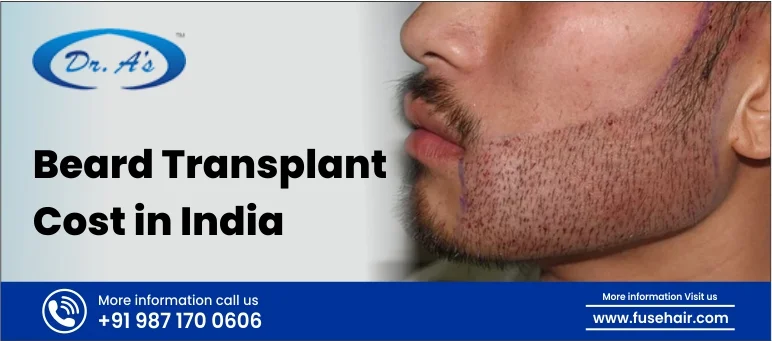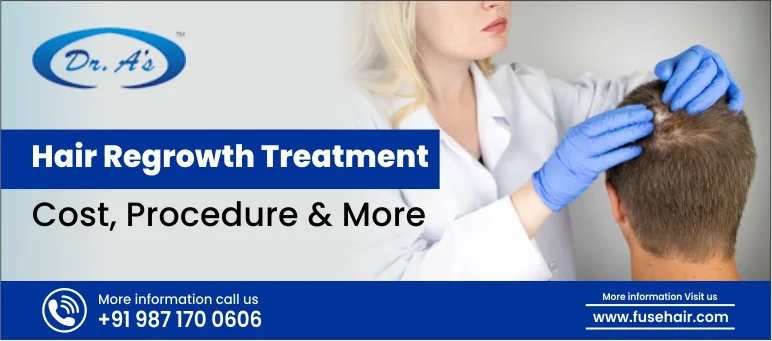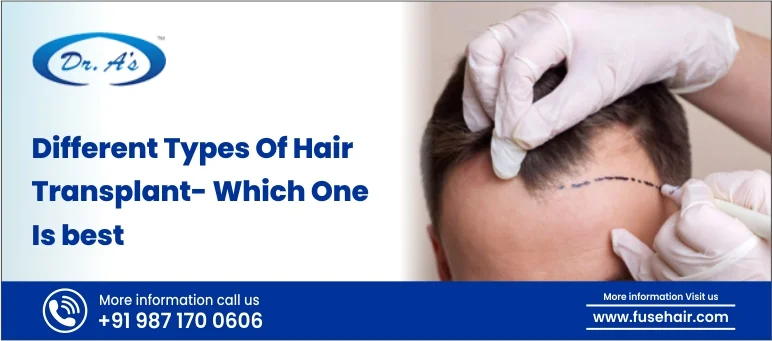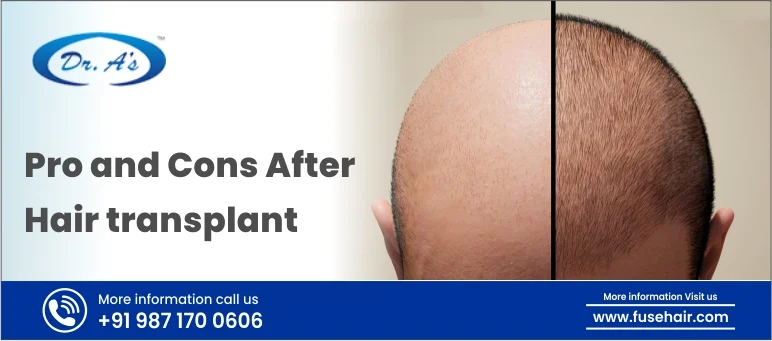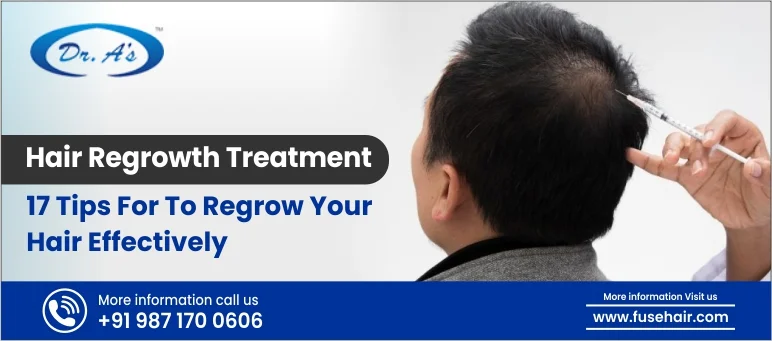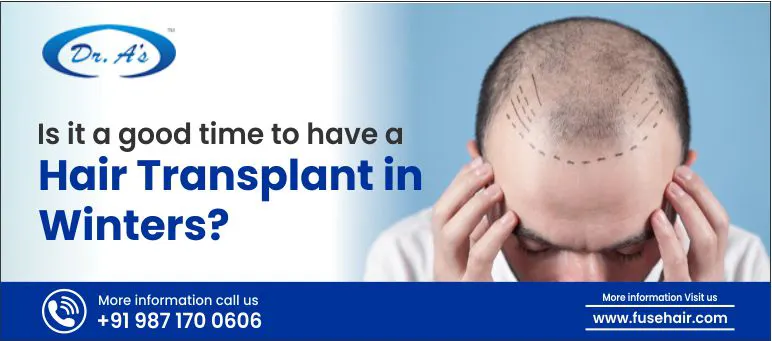
Hair transplant surgeries have gained popularity as a solution for hair loss, yet they entail inherent risks like any surgical procedure. Potential risks include infections, scarring, follicle rejection, and dissatisfaction with results.
Various factors such as surgical technique, post-operative care, and individual healing responses can influence hair transplant success rate. Despite advancements, not all patients achieve their desired hair density or natural appearance post-transplant.
In this case, consulting with a qualified surgeon like Dr. Arvind Poswal ensures informed decisions and improved chances of satisfactory outcomes in hair transplant surgeries.
7 Reasons Why Hair Transplant Fails?
In this guide, we’ll delve into seven reasons for hair transplant failures and provide insights into how to avoid or mitigate these issues. Below are top 7 reason why hair transplant fail:
-
Poor Surgical Technique
Hair transplant failure often stems from subpar surgical techniques. This encompasses multiple factors, such as insufficient pre-op planning, improper donor hair extraction, and inaccurate graft placement. Inadequate planning can lead to mismatched expectations and unsatisfactory outcomes. Improper harvesting of donor hair may cause scarring or uneven distribution, detracting from the natural look. Incorrect placement of grafts affects both aesthetic appeal and long-term viability. Surgeons must meticulously plan, execute, and monitor every step to ensure optimal results.
Selecting a proficient and seasoned surgeon specializing in hair transplants is paramount to overcoming these challenges. Conduct thorough research on their credentials, patient reviews, and before-and-after images to gauge their expertise. A competent surgeon is adept in techniques like follicular unit extraction (FUE) or follicular unit transplantation (FUT) can significantly enhance success rates.
These advanced methods ensure precise donor hair extraction and meticulous graft placement, yielding natural-looking results. Prioritizing the choice of an experienced professional minimizes the risks associated with poor surgical technique, offering patients the best chance for a successful and satisfactory hair transplant outcome.
-
Insufficient Blood Supply
The success of a hair transplant is intricately tied to the blood supply to transplanted follicles. Adequate blood flow ensures essential nutrients and oxygen reach the grafts, facilitating their survival and growth. Insufficient blood circulation can lead to grafts not taking hold or failing to thrive in their new location. This can result from various factors such as poor surgical technique, inadequate post-operative care, or pre-existing vascular conditions.
During the transplant procedure, surgeons must meticulously handle grafts to preserve their vascular integrity. Post-operatively, patients should adhere strictly to recovery guidelines to promote optimal blood circulation to the transplanted area. Smoking, excessive alcohol consumption, and certain medications can impair blood flow, potentially compromising transplant success.
Surgeons play a vital role in optimizing blood supply during hair transplant procedures. Prior to surgery, a careful assessment of the recipient site’s vascularization is crucial. This involves evaluating the quality and quantity of blood vessels to ensure adequate nourishment for transplanted follicles. Surgeons may use imaging techniques or visual inspections to assess vascular health, allowing them to plan the procedure accordingly.
Post-operative care instructions are equally important in enhancing blood circulation to the transplanted area. Patients are typically advised to avoid smoking, as nicotine constricts blood vessels, impairing blood flow. Following a healthy diet rich in nutrients that promote hair growth, such as vitamins A, C, and E, iron, and protein, can also support optimal blood supply to the grafts.
-
Infection
Infections represent a significant risk following hair transplant surgery if stringent hygiene and sterilization protocols are not adhered to during the procedure. Contamination from bacteria or other pathogens can jeopardize the viability of transplanted follicles, potentially resulting in overall transplant failure.
To mitigate the risk of infections, surgeons must maintain a sterile environment throughout the surgery. This includes using sterile instruments, wearing appropriate protective gear, and ensuring a clean operating room. Proper sterilization techniques for equipment and surgical areas are imperative to minimize the introduction of harmful microorganisms.
Post-operative care also plays a crucial role in infection prevention. Patients are typically instructed to keep the transplant area clean and follow specific hygiene practices to reduce the risk of bacterial growth. Any signs of infection, such as increased redness, swelling, or discharge, should be promptly reported and treated by medical professionals.
By prioritizing strict hygiene and sterilization measures, surgeons can significantly reduce the incidence of post-operative infections, safeguarding the success and viability of transplanted follicles for optimal hair transplant outcomes.
-
Improper Post-Op Care
Inadequate post-operative care is a common factor contributing to hair transplant failure. Patients play a crucial role in the success of their procedure by diligently following the prescribed care regimen provided by their surgeon.
Post-operative care typically includes instructions on how to care for the transplant area, such as keeping it clean and dry, avoiding scratching or rubbing the scalp, and refraining from strenuous activities that could disrupt healing. Patients may also be prescribed medications like antibiotics or anti-inflammatory drugs to prevent infections and reduce swelling.
Consistency in following these guidelines is essential for promoting proper healing and ensuring the best possible outcome from the hair transplant. Neglecting post-operative care can lead to complications such as infections, graft failure, or poor hair growth patterns.
Patients should communicate any concerns or changes in their recovery to their surgeon promptly. By actively participating in their post-operative care, patients significantly contribute to the success and longevity of their hair transplant results.
-
Scar Tissue
Scarring is a potential complication that can occur at both the donor and recipient sites following a hair transplant procedure, impacting the overall aesthetic results and potentially impeding the success of the transplant. Excessive scarring can be particularly concerning as it may hinder blood flow to the transplanted follicles, leading to reduced nutrient supply and compromised follicle survival.
Scarring at the donor site typically results from the extraction of hair follicles, especially in techniques like follicular unit transplantation (FUT), where a strip of scalp is removed. Adequate closure techniques and proper post-operative wound care can help minimize donor site scarring.
At the recipient site, scarring may occur due to the insertion of grafts and the body’s healing response. However, experienced surgeons like Dr. Arvind Poswal employ meticulous techniques to minimize trauma and scarring at the recipient site. Nevertheless, individual healing processes can vary.
Patients should follow their surgeon’s post-operative care instructions carefully to reduce the risk of excessive scarring. This may include keeping the scalp clean and avoiding activities that could disrupt the healing process. Regular follow-up appointments allow surgeons to monitor healing progress and address any concerns promptly, optimizing the aesthetic outcomes of the hair transplant procedure.
-
Hair Transplant Graft Rejection
In rare instances, the body’s immune system may identify transplanted hair follicles as foreign objects and initiate a rejection response. This can result in poor growth or complete failure of the transplant. The rejection process typically involves the immune system attacking and destroying the transplanted follicles, preventing them from establishing a healthy connection with the surrounding tissue.
Several factors can contribute to follicle rejection, including inadequate compatibility between donor and recipient tissues, improper handling or storage of grafts, and individual immune system responses. Patients with a history of autoimmune disorders or previous transplant rejections may be at a higher risk of follicle rejection.
To minimize the risk of rejection, surgeons employ meticulous techniques during transplantation and carefully select donor grafts compatible with the recipient site. Immunosuppressive medications may also be prescribed in some cases to suppress the immune response and improve graft survival rates.
Regular follow-up appointments allow surgeons to monitor graft growth and address any signs of rejection promptly. While follicle rejection is uncommon, it underscores the importance of thorough pre-operative evaluation and personalized transplant strategies to optimize success rates and minimize potential complications.
-
Non-Realistic Expectations
Unrealistic expectations regarding the outcome of a hair transplant are a common factor contributing to dissatisfaction among patients. It’s crucial for individuals considering a hair transplant to have a clear understanding of what the procedure can realistically achieve. Hair transplantation can improve hair density and coverage in areas of hair loss but may not fully restore hair to its original state or create an entirely new hairline.
Open communication with the surgeon is key to managing expectations. Patients should discuss their goals, concerns, and any limitations with the surgeon during the pre-operative consultation. The surgeon can provide a realistic assessment of the expected outcomes based on the individual’s unique hair loss pattern, donor hair availability, and other factors.
Managing expectations also involves understanding the timeline of results. Hair growth after a transplant is gradual, and final results may take several months to a year to become fully apparent. Patients should be patient and realistic about the progression of their results, as expecting immediate or dramatic changes can lead to dissatisfaction.
Having realistic expectations and open communication with the surgeon, patients can make informed decisions about their hair transplant and achieve a more satisfying outcome.
Conclusion
While hair transplant surgeries offer a viable solution for hair loss, they are not without risks. Understanding the potential reasons for transplant failure and implementing appropriate solutions can significantly improve the chances of a successful outcome. Remember to choose a qualified surgeon, follow post-operative care instructions diligently, and maintain realistic expectations throughout the process. By doing so, you can enhance the likelihood of achieving natural-looking, long-lasting results from your hair transplant procedure and reduce the chances of a hair transplant failure.
Dr. A’s Clinic stands as a pinnacle of excellence in hair transplant procedures. With advanced techniques and a team of highly skilled experts, they deliver unparalleled results for hair restoration. Dr. A’s Clinic prioritizes patient satisfaction, offering personalized treatment plans tailored to individual needs. Their state-of-the-art facilities and commitment to innovation ensure the best possible outcomes.
Whether it’s follicular unit extraction (FUE), follicular unit transplantation (FUT), or advanced PRP therapy, Dr. A’s Clinic is renowned for achieving natural-looking, long-lasting results. Trust in their expertise and experience for a transformative hair transplant experience that restores confidence and beauty.
FAQs
-
Why do most hair transplants fail?
Most hair transplant failures occur due to poor surgical techniques, inadequate post-operative care, unrealistic expectations, and underlying medical conditions affecting hair growth or healing.
-
In which cases does a hair transplant fail?
A hair transplant may fail in cases of inadequate donor hair availability, severe scarring at the recipient or donor sites, autoimmune disorders, or rejection of transplanted follicles.
-
In which case hair transplant is not possible?
A hair transplant may not be possible in cases of extensive scarring, insufficient donor hair, uncontrolled medical conditions affecting healing, or unrealistic expectations.
-
Why does a hair transplant not work?
Hair transplants may not work due to poor surgical planning, improper graft placement, inadequate blood supply, infections, or rejection of transplanted follicles.
-
Who is not suitable for a hair transplant?
Individuals with unrealistic expectations, severe medical conditions, insufficient donor hair, extensive scarring, or active autoimmune disorders may not be suitable candidates for a hair transplant.





























